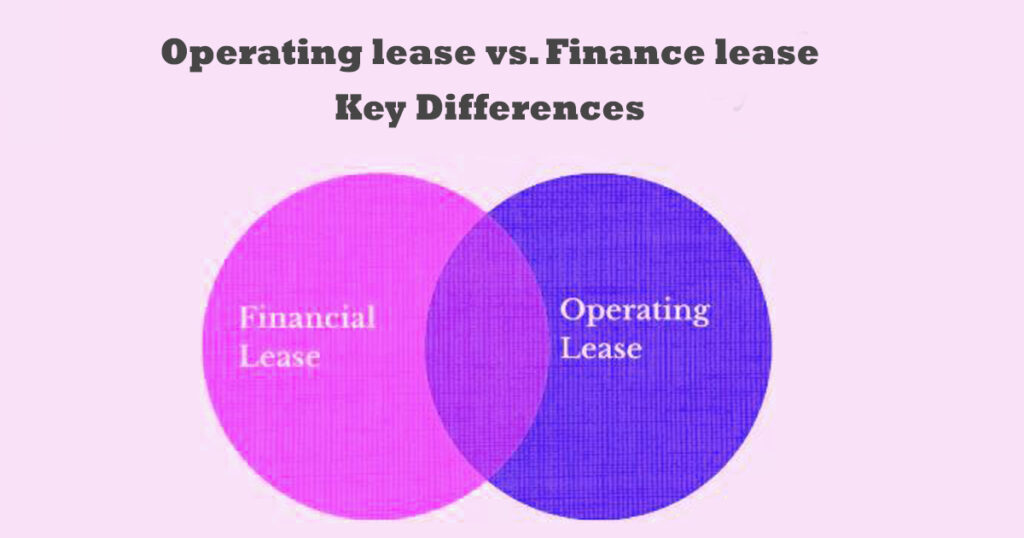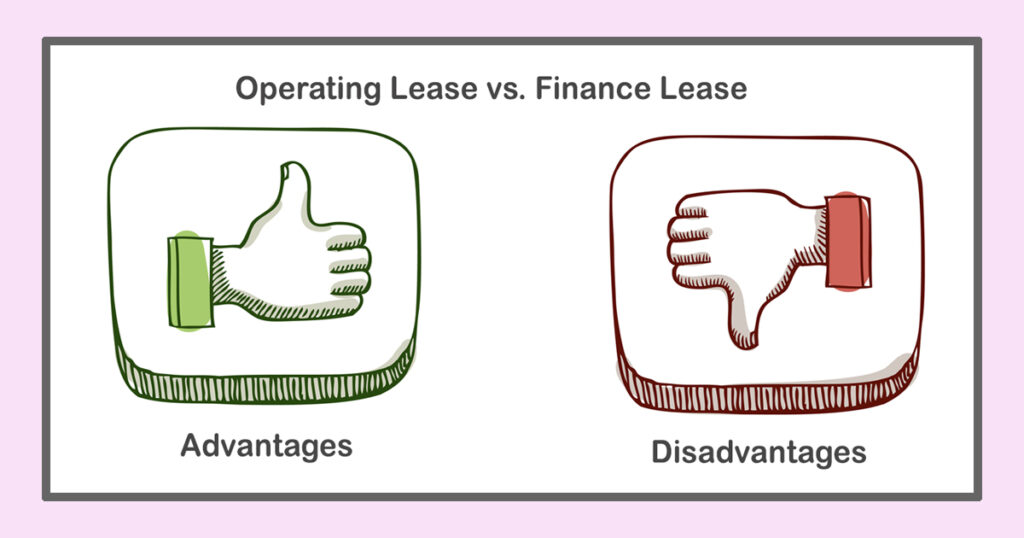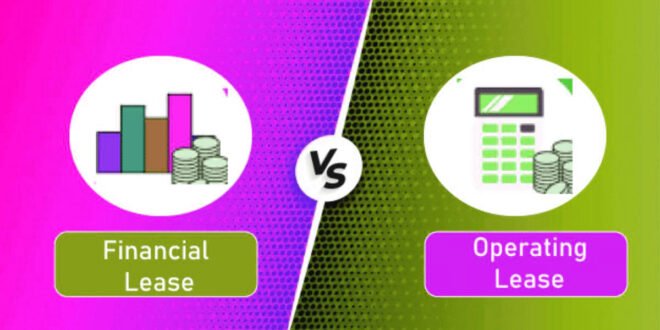Introduction to “Operating Lease vs. Finance Lease”
Our blog, “Operating Lease vs. Finance Lease”, is designed to pull back that curtain, offering a clear, human-centered exploration of these leasing pathways. We won’t just toss jargon and statistics your way. Instead, our commitment is to provide a unique blend of factual clarity combined with relatable narratives, ensuring you grasp the essence and the nuances. The imperative to differentiate between these two lease types is more than academic; it’s about making informed choices that align seamlessly with a company’s overarching goals.At the heart of many businesses lies a pivotal decision, often overshadowed by other buzzworthy topics, yet crucial to financial and operational strategies: the choice of leasing. Leases, far from being mere agreements, become the backbone of a company’s asset management. They influence cash flow, business flexibility, and even how outsiders perceive a company’s financial health. Yet, a cloud of ambiguity often surrounds the decision, specifically in understanding the distinction between an “Operating Lease” and a “Finance Lease”.
So, as you journey through our posts, expect a blend of expertise, real-world examples, and a touch of humanity. Welcome to “Operating Lease vs. Finance Lease”, where finance meets real-life storytelling. Dive in!
2. Basic Definitions and Concepts
Decoding the “Operating Lease” in “Operating Lease vs. Finance Lease”
When you dip your toes into the vast waters of business finance, the world of leases is impossible to ignore. Yet, many find themselves navigating these waters with a compass that’s missing a few crucial directions. This is particularly true when distinguishing between an “Operating Lease” and a “Finance Lease”. To chart a clear course, we’ll first anchor our understanding in the realm of the Operating Lease.
A. Definition and Key Characteristics of an Operating Lease:
In the simplest terms, an Operating Lease can be seen as a business’s way of saying, “I’d like to use this, but not own it.” Diving deeper:
- Temporal Nature: Unlike its counterpart, the Operating Lease is generally short-term. It doesn’t commit the business to the asset’s entire useful life.
- Off the Balance Sheet: Financial statements won’t reflect the asset. Instead, lease payments are treated like a rental expense.
- Maintenance Matters: Often, the lessor retains the responsibility to maintain and repair the asset, taking one worry off the lessee’s plate.
B. Typical Duration and Renewal Terms:
Operating Leases are often likened to sprinters rather than marathon runners. They are usually crafted for shorter durations, ranging from months to a few years. As the finish line, or the end of the lease term, draws near, businesses can decide on their next move: whether to renew the lease, possibly under new terms, or to part ways with the asset. The beauty of the Operating Lease lies in this adaptability.
C. Ownership Considerations at the Lease’s Conclusion:
This is where the “Operating” in “Operating Lease vs. Finance Lease” shines its uniqueness. Once the lease term winds up, the asset gracefully returns to the lessor’s hands. The lessee might:
- Embark on a new lease journey with a fresh asset.
- Renew their bond with the current asset by extending the lease.
- Or, simply bid the asset farewell, with no strings attached.
As our exploration into “Operating Lease vs. Finance Lease” continues, it’s evident that every lease type is akin to a unique story with its own set of characters, plots, and conclusions. With the Operating Lease, businesses get to be the agile protagonist, experiencing adventures without long-term binds. Join us as we further unfold these tales, offering you a blend of knowledge, insights, and a touch of human narrative to illuminate the world of leases.
Unveiling the “Finance Lease” in “Operating Lease vs. Finance Lease”
After our deep dive into the realm of Operating Leases, it’s time to shift our focus to the other pillar of our exploration: the Finance Lease. When navigating the financial landscape of asset acquisition, understanding the nuances of a Finance Lease is critical, especially when juxtaposed against its Operating counterpart. With a blend of rigorous detail and human insight, let’s demystify this often-misunderstood leasing strategy.
A. Definition and Key Characteristics of a Finance Lease:
A Finance Lease, often termed a ‘capital lease’, is more than just a lease in the traditional sense. Think of it as a commitment, both operational and financial, to an asset. Here’s what defines it:
- Long-Term Agreement: This lease typically spans most of the asset’s useful life.
- Balance Sheet Entry: Unlike its Operating counterpart, the asset and corresponding liability appear on the lessee’s balance sheet.
- Amortization and Interest: Payments are often split into interest and principal components, similar to loan repayments.
B. How it’s Similar to Purchasing an Asset with a Loan:
Drawing a parallel between a Finance Lease and purchasing an asset with a loan isn’t far-fetched. In fact, they’re strikingly similar. When a business opts for a Finance Lease, they’re essentially committing to the asset, almost like they would if they’d taken a loan to purchase it outright. The lessee bears risks and rewards associated with ownership. They make regular payments, which bear resemblance to loan repayments, covering the interest (cost of leasing) and principal (asset value).
C. Ownership and Asset Treatment at the End of the Lease:
This is where the Finance Lease carves its unique identity in the “Operating Lease vs. Finance Lease” narrative. As the lease term concludes, the lessee often has the option, if not an outright expectation, to assume full ownership of the asset, sometimes for a nominal fee. The path to ownership is smoother and more direct compared to the Operating Lease. Essentially, the asset, which started as a ‘leased’ item, seamlessly transitions into being a ‘owned’ asset in the company’s books.
As we continue to traverse the landscape of “Operating Lease vs. Finance Lease”. The Finance Lease emerges as a powerful tool for businesses eyeing long-term asset use, combined with the perks of eventual ownership. Engage with us further as we delve deeper, offering a human touch to the often complex world of financial decisions and strategies.
3. Key Differences

Ownership
- In the realm of leasing, asset ownership is a pivotal differentiator. With an Operating Lease, the lessor retains asset ownership, ensuring the lessee simply uses the asset temporarily. Contrastingly, a Finance Lease sees the lessee assuming the risks and rewards of ownership, often leading to eventual ownership. Navigating the intricacies of “Operating Lease vs. Finance Lease” is vital for informed financial decisions.
Balance Sheet Treatment
- Diving into the “Operating Lease vs. Finance Lease” debate. Their treatment on the balance sheet stands out. With an Operating Lease, obligations typically remain off-balance-sheet, offering an unencumbered view. However, a Finance Lease directly impacts the balance sheet, recording both the asset and corresponding liability, revealing deeper financial commitments.
Duration
- When considering “Operating Lease vs. Finance Lease”, lease term lengths are strikingly distinct. Operating Leases generally feature shorter terms, aligning with the asset’s useful life. In contrast, Finance Leases often span the majority, if not all, of the asset’s life, aligning with the intent of eventual ownership.
Risk and Rewards
- In the “Operating Lease vs Finance Lease” discussion, risk assumption is paramount. With an Operating Lease, the lessor shoulders the risk of asset depreciation and obsolescence. Conversely, under a Finance Lease, the lessee takes on this risk, anticipating the asset’s potential wear and evolving market relevance.
Tax Implications
- In the “Operating Lease vs Finance Lease” analysis, tax treatments vary. An Operating Lease usually allows lessees to deduct lease payments as operational expenses. Meanwhile, with a Finance Lease, lessees typically claim both depreciation on the asset and interest expense on the lease, influencing their tax positions differently.
End of Lease Options
- Exploring “Operating Lease vs Finance Lease” end options, distinctions emerge. An Operating Lease often grants choices to renew or return the asset post-term. However, with a Finance Lease, options typically lean towards buying the asset outright after lease completion, solidifying the lessee’s ownership position.
4. Operating Lease vs Finance Lease: Advantages and Disadvantages
- When delving into “Operating Lease vs Finance Lease,” understanding their respective benefits and drawbacks is pivotal.

Operating Lease
Advantages:
- An Operating Lease provides flexibility, making it suitable for businesses not keen on long-term asset commitment. Lessees can update or switch assets in line with advancements, ensuring they always use up-to-date equipment. This lease type also keeps liabilities off the balance sheet, often favoring a company’s financial ratios.
Disadvantages:
- Over the long haul, cumulative lease payments can exceed the asset’s actual cost. Moreover, there’s no equity built in the asset, and businesses might end up paying more for a continually renewing lease than purchasing outright.
2. Finance Lease:
Advantages:
- A Finance Lease often culminates in asset ownership, making it apt for businesses wanting to retain the asset long-term. It allows lessees to gain from any residual value the asset might hold post-depreciation. Furthermore, tax benefits such as claiming both interest expense and depreciation can be advantageous.
Disadvantages:
- The lessee bears the brunt of asset depreciation and potential obsolescence. As the asset and associated liability appear on the balance sheet, it can impact borrowing capabilities. Additionally, the initial cash outlay for a finance lease might be higher, affecting short-term liquidity.
5. Practical Implications
The “Operating Lease vs Finance Lease” debate extends its ramifications to diverse stakeholders, most notably businesses and investors.
1. For Businesses:
- In the intricate dance of “Operating Lease vs Finance Lease,” businesses must be attuned to the subtleties of each. Operating Leases offer a nimble approach. Businesses can adapt quickly to technological advancements without being burdened by dated assets. Especially for sectors where equipment rapidly evolves, this flexibility is invaluable. Cash flow is also more predictable, given the regular, consistent lease payments. However, there’s a catch: over time, businesses might spend more than if they had just purchased the asset. On the other hand, a Finance Lease becomes an investment in the future. Businesses essentially bet on the long-term utility of the asset. This strategy can be economical in the long run, especially when the asset retains its functional value over time. But it does tie up capital, potentially hampering the agility to pivot in dynamic markets.
2. For Investors:
- For investors dissecting “Operating Lease vs Finance Lease” in a company’s books, the implications are profound. Operating Leases can make a company appear less leveraged since the lease obligations remain off the balance sheet. However, astute investors delve deeper, recognizing the long-term commitments these leases signify. Conversely, Finance Leases present a clearer picture of a company’s asset ownership. They bolster the asset side of a balance sheet. Yet, the corresponding liability can raise leverage ratios, potentially signaling higher risk. However, seeing a business investing in assets can also be a positive sign, denoting confidence in its long-term strategy and operations. In sum, each lease type provides a different lens through which investors gauge a company’s strategy, financial health, and risk profile.




